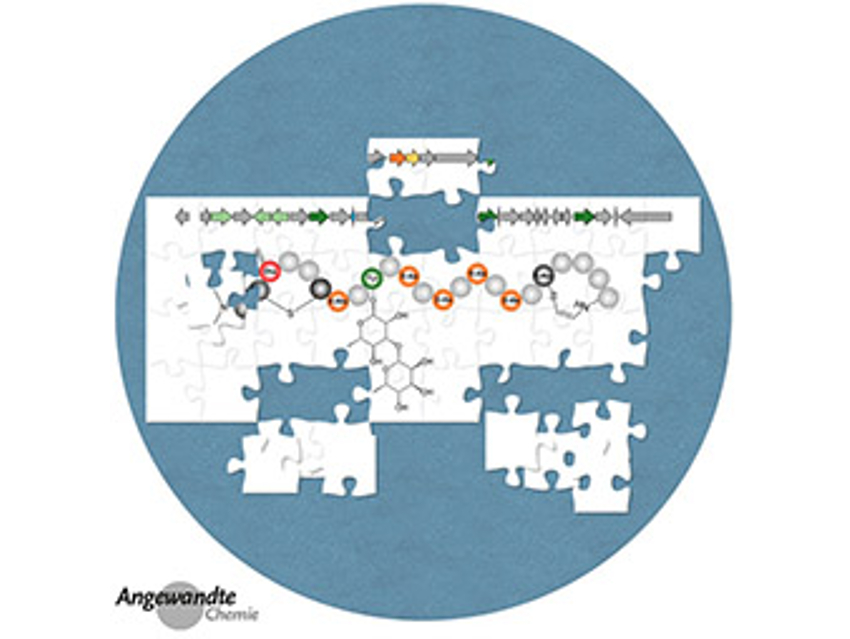In this issue, J.-Q. Huang et al. review lithium–sulfur batteries under lean electrolyte conditions. What are the challenges and opportunities? The Minireviews deal with asymmetric electrochemical transformations (C. Guo et al.) and enantioselective synthesis of atropismers with multiple stereogenic axes (D. Bonne et al.). In part A of their Essay trilogy, R. Hoffmann and J.-P. Malrieu set the stage on simulation vs. understanding: a tension in quantum chemistry and beyond. In a Viewpoint, J. B. Simonsen and R. Münter advocate paying attention to biological nanoparticles when studying the protein corona on nanomedicines. R. Zhang contributes a correspondence on the structure of cupin protein Pac13.
In the original research section, O. Genilloud et al. present cacaoidin, the first member of the lanthidin RiPP family (see picture). C. Ochsenfeld et al. combined computational and experimental methods to predict 19F NMR chemical shifts of a trypanosomal oxidoreductase–inhibitor complex. Z. Chen et al. found a ternary Sn-Ti-O electrocatalyst to boost the stability and energy efficiency of CO2 reduction. M. Bercovici et al. describe a tunable bidirectional electroosmotic flow for diffusion-based separations.
- Angewandte Chemie 31/2020: Moving into the Future,
Angew. Chem. Int. Ed. 2020, 59 (31).

